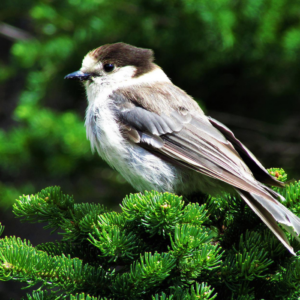Leaders Celebrate a Decade of Conservation Efforts as U.S. Bird Protection Law Turns Ten
 |
| Ruby-throated hummingbird |
As millions of birds wing their way back to North America this spring, leaders in the conservation movement are gathering tonight in Washington D.C. to celebrate the passage of a key American wildlife law ten years ago.
For 10 years, the Neotropical Migratory Bird Conservation Act has catalyzed bird conservation in the Americas with the investment of $125 million through an innovative public-private partnership that triples every dollar taxpayers invest by matching government grants three-to-one with private dollars.
In the process, the legislation has energized local, on-the-ground conservation and habitat restoration initiatives throughout the Western hemisphere, including Canada.
The passage of this act has had a hugely positive impact on bird conservation efforts throughout the hemisphere. From breeding grounds in Canada, to wintering sites in the south, and all points in between, projects supported by this law are helping us understand what is happening to bird populations and take coordinated action to preserve entire species.
Our executive director, Ian Davidson is joining ambassadors from several western hemispheric nations and leaders in bird conservation at the D.C celebration event, held at the Hall of the Americas. The event is hosted by the National Audubon Society and the National Fish and Wildlife Foundation.
From disappearing marshlands along the Gulf Coast, to pesticides and pollution along major flyways, migrating birds like Red Knots, Swainson’s Hawks and Ruby-throated Hummingbirds face an arduous journey in search of healthy habitat. More than one third of all Neotropical species are in decline. Since its passage in 2000, the Neotropical Migratory Bird Conservation Act has helped protect more than 3 million acres of vital bird habitat.
In Canada, funding from the act helped community stewardship of local bird habitat at Important Bird Areas (IBAs), with the launch of the Canadian Important Bird Areas Caretaker Network. Initiated by BC Nature, and now operating in seven provinces, Caretakers are matched to specific IBAs to monitor birds, assess habitats, and conduct conservation activities.
Since 2007, funding from the act has also helped Nature Canada to work with its BirdLife International partner in Haiti, Haitian Audubon Society, to conserve rare forest habitat of migratory bird populations like the Bicknell’s Thrush.
The project is located in the community of Formon, on the edge of Macaya National Park, an important wintering habitat for the Bicknell’s Thrush, a secretive and threatened songbird that breeds in Atlantic Canada. Threats to the songbird, which has declined in Maritime Canada (Nova Scotia and New Brunswick) by 15% annually over the last two decades, include atmospheric pollution, climate change and loss or degradation of its forest habitats.
Community residents are provided an incentive – children attend school for free if their parents agree to stop cutting down the forest and help with reforestation – to adopt sustainable forest management practices which relieve pressure on important habitat for migratory birds. Over 80% of the parents have agreed, and for the second year in a row, the school has offered hope for 300 girls and boys.
The true significance of legislation like the Neotropical Migratory Bird Conservation Act is that it encourages cross-border conservation efforts — which, for migratory birds, is the only truly effective means of saving species. It’s an act that deserves continued support.



